The company responsible for funding the Norway pavilion would end up selling its stake to Disney directly in 1992. Since Epcot’s annual attendance is roughly twice the population of Norway, the government of the country saw it fit to step in, funding the pavilion with $200,000 annually – enough to keep it from shuttering as some of Epcot’s sponsorless Future World pavilions did.
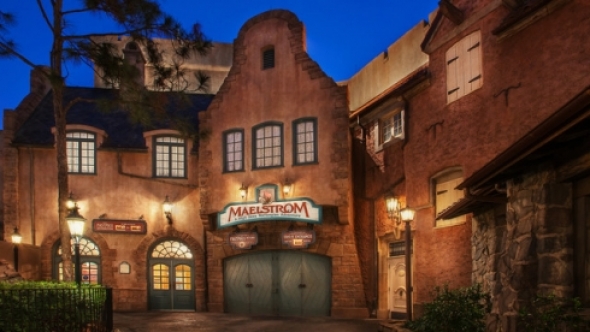
The 1992 move by the government was renewable in five years increments, and in 1997, they did renew. But in 2002 – along with many other Epcot sponsors – Norway decided to discontinue its agreement against the (predictably pro-renewal) advice of Disney.
Even without outside funds to cover updates and enhancements, Maelstrom seemed like a certainty when it came to Epcot. After all, the high seas adventure sailed into the misty past, present, and folktales of Scandinavia; nothing else could reliably replace it in its Norwegian setting, right? Surely, even IP-obsessed modern Disney couldn’t ever find a matching character license to overlay on a ride through Norway!
You know what’s coming next…
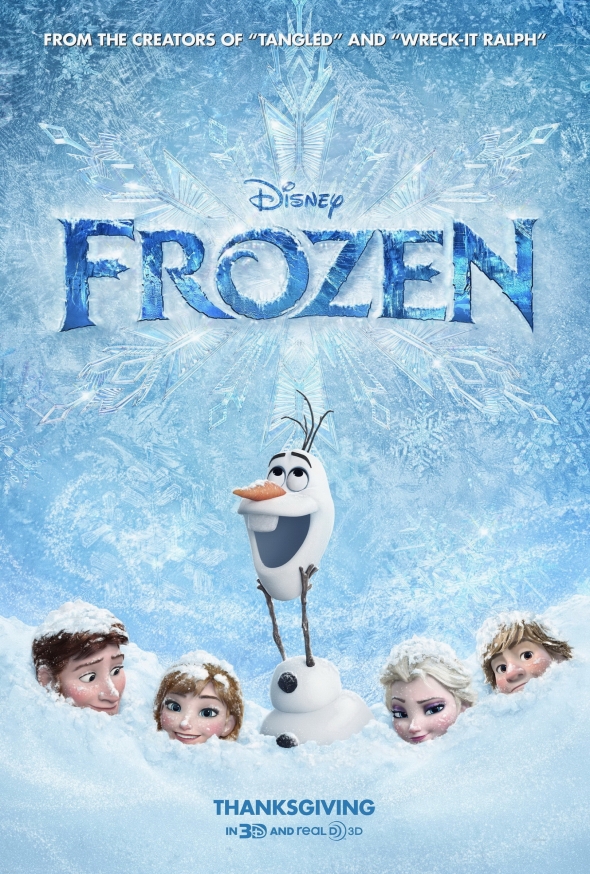
In 2013, Disney storytellers finally cracked their 80-year battle with adapting the icy fable of The Snow Queen, originally published in 1844 by Danish author Hans Christian Andersen (who also wrote The Little Mermaid).
Frozen centers around the frosty relationship between two sister princesses – Anna and Elsa. Elsa maintains a chilly distance from her younger sister to protect Anna from her secret (and increasingly uncontrollable) ice powers. On the night of her coronation, Elsa’s emotions get the best of her and she ignites an eternal winter that blankets the Scandanavian kingdom of Arendelle in snow. Naturally, it’s up to Anna to chase her fleeing, frightened sister into the snowy mountains to convince her that she’s not better off alone.
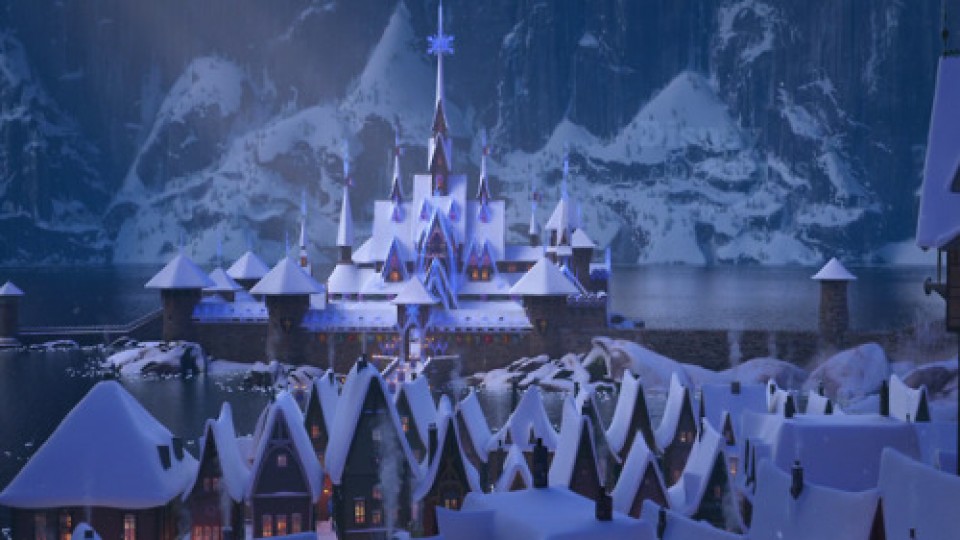
It probably goes without saying that, $1.2 billion later, Frozen became the highest grossing animated film of all time. It also spawned 2019’s darker and more mythological Frozen II, recapturing the magic by earning the biggest box office debut for an animated film ever, then bypassing its own predecessor to claim the highest grossing animated film record for its own.
It was inevitable…
Frozen Ever After
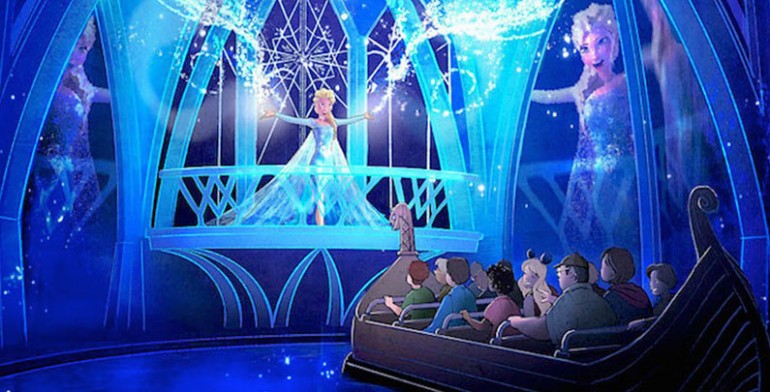
In a nonchalant post on the Disney Parks Blog dated June 9, 2015, Disney Parks’ Social Media Director quietly announced that Epcot would soon play host to a brand new attraction in 2016 based on Disney’s 2013 mega-hit, Frozen. The ride to replace Maelstrom would be called Frozen Ever After.
Shortly into construction on the brand new ride, Disney came clean with just what fans had feared: that Frozen Ever After wouldn’t just re-use Maelstrom’s ride building; it would re-use the ride itself. That meant that Maelstrom’s barely-four-minute ride time and relatively middling capacity would remain, too, now just earning spectacular waits from families dying to see the blockbuster princesses up close.

Frozen Ever After opened June 21, 2016. Fortunately, the resulting attraction is, to put it mildly, a total reinvention. A wonderful ride in its own right, Frozen Ever After is a sensational showcase of modern Imagineering and its triumphs.
First and foremost, it is not a “book report” ride – a term used by Imagineers and fans to describe dark rides that simply whisk guests through a three minute summary of a story they already know. Instead, this ride is set after the film, with guests visiting Arendelle and boarding old Scandanavian Viking boats (eh hem…) to celebrate Winter Summer Day – an annual celebration when Elsa plans to (purposefully) coat the kingdom in ice and snow to commemorate the day Anna saved her from her lonely world.
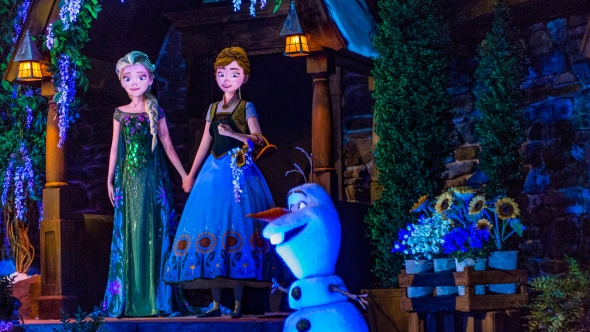
On board, riders hear pieces and parts of some favorite songs from the award-winning soundtrack, and while the track layout is an instant giveaway and a few allusions are scattered throughout, sights and sounds alone make it impossible to know that Maelstrom ever existed here. It’s unfair to call this ride an “overlay.” While it may re-use Maelstrom’s track and vehicles, they’re merely the backbone of an entirely new ride that’s every bit as permanent.
The home-run, by far, is the introduction of brand-new and impossibly astounding Audio-Animatronics figures. So lifelike and so compelling are these “living” figures, we count it as the first time it’s ever really looked like a cartoon character is sincerely alive, standing before us – easily Disney’s best work with human figures. In fact, the citizens of Arendelle ranked high on our must-read Countdown of the Best Animatronics on Earth. And that’s saying something.
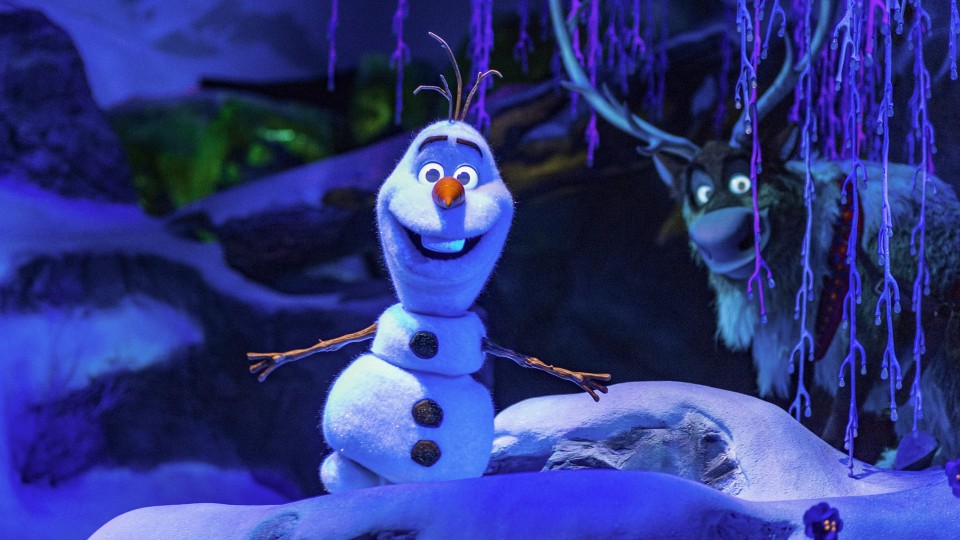
Ultimately, Frozen Ever After isn’t just a “replacement” for Maelstrom; it’s a staggering triumph in its own right. That’s why it earned its own in-depth making-of feature in our companion series, Modern Marvels: Frozen Ever After. Make the jump there to dive into Disney’s search for the Snow Queen and the inner workings of the new Epcot ride. That’s also where you’ll find a ride-through video chronicling the attraction – perfect for comparing to Maelstrom’s point-of-view video.
You can decide for yourself what you think of Frozen independently of Maelstrom or compared to it. Either way, you can imagine that from long before its opening through today, Disney fans have come out of the woodwork on all sides of the Frozen Ever After issue, engaging in heated discussions about the many precedents this ride obliterates, the new ones that it sets, and the many questions that this move raises. Here are just a few:
1. Do characters belong in World Showcase? Or in Epcot at all?
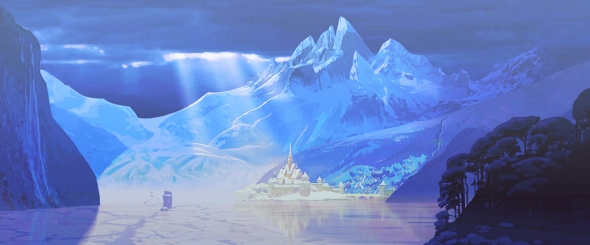
The story of the intersection between Disney Parks and Disney characters is a long one, dating all the way back to Disneyland’s opening in 1955. But today, the balance seems to have shifted as never before. As Disney’s catalogue of fresh stories and newly-acquired characters expands, so too does the assurance that any addition to the parks will have a blockbuster series attached.
EPCOT was once envisioned as a respite from Disney’s cartoon origins. In fact, Disney characters were intentionally absent at the time of the park’s opening. Slowly but surely, for better or worse, they moved in. Mickey and friends became Epcot regulars as The Lion King, Finding Nemo, and Guardians of the Galaxy invaded Future World and character meet-and-greets became unavoidable in World Showcase – Aladdin and Jasmine in Morocco, Mary Poppins in the U.K., Belle and the Beast in France…
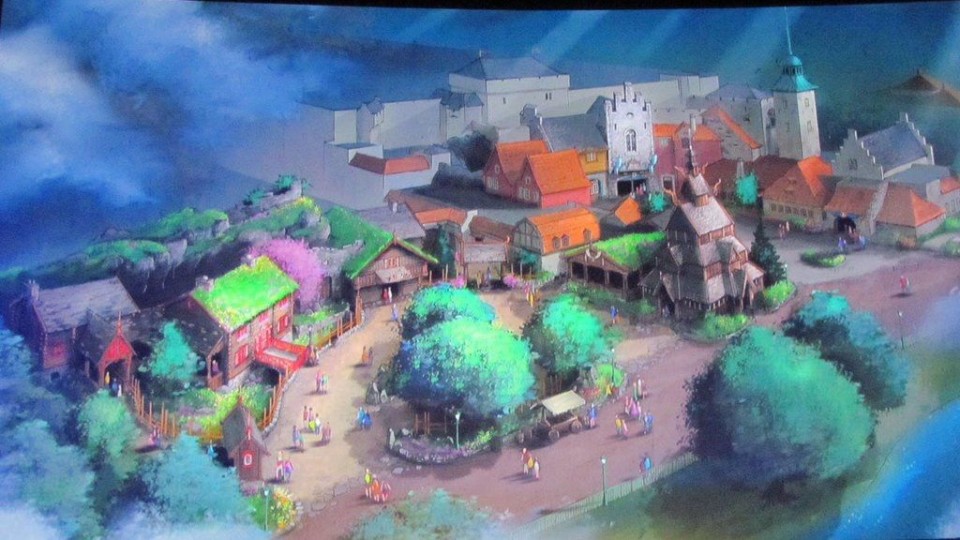
It doesn’t escape the notice of longtime Epcot fans, for example, that Frozen is surely based on the Scandanavian folktale of a Danish author, and that its setting is surely inspired by the architecture and customs of Norway, Denmark, and Finland… but no matter how you slice it, Arendelle is… well… fictional. And sure, Disney’s expansion of the pavilion (above, taking over one of World Showcase’s vacant plots) dutifully keeps the look and feel of Norway, but only to house facilities for Anna and Elsa.
Doesn’t it betray the realities of Norway and the Norwegian cultural representatives who staff the pavilion to sell Olaf plush and welcome families to Arendelle? Might Disney add a ride through Agrabah to Morocco? A journey through Narnia to the U.K.? A voyage to Rapunzel’s Corona to Germany? Most visitors probably wouldn’t care or notice, after all…
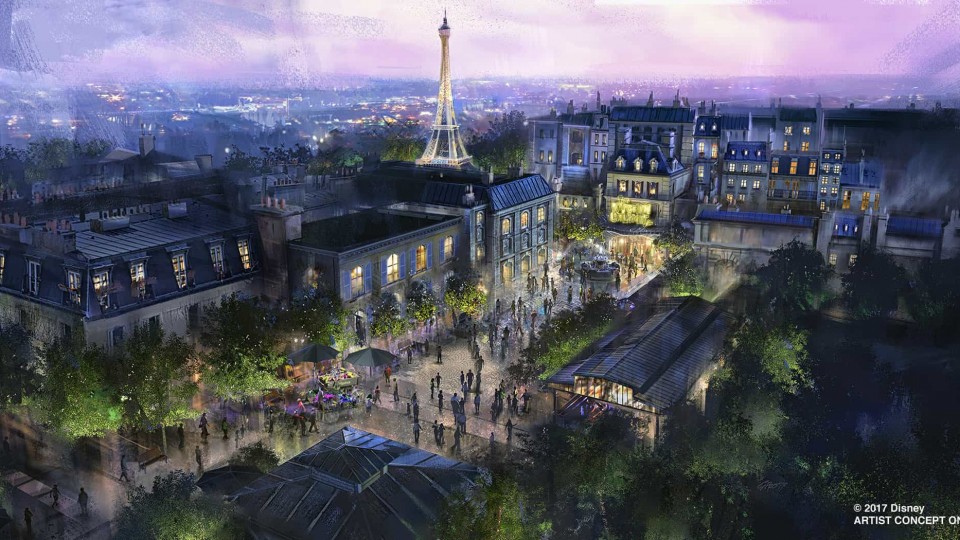
But the “character invasion” will continue, even if it’s not by way of fantasy kingdoms. As part of the grand reimagining of Epcot underway now, World Showcase is hosting the Modern Marvel: Remy’s Ratatouille Adventure in France (taking up another of the vacant pavilion plots), with Mary Poppins en route to the U.K. and inevitable rumors of Pixar’s Coco overtaking the ride in Mexico. While each of those is certainly a “character invasion,” at least their respective films are set in the nations whose pavilions they’ll inhabit, making it a bit easier for fans to accept.
Still, if you listen to Epcot fans, there is something to be fundamentally said about the importance of keeping some theme parks “real-life” and aspiring to more than just selling Disney IP. If every Disney Park becomes an immersive, Magic-Kingdom-style fantasy park of movie-themed lands and cartoon characters, why have different parks at all? If Anna and Elsa can be reasonably at home at Magic Kingdom, Epcot, and Disney’s Hollywood Studios, then the parks are surely missing clear and concise individual identities, right?
2. Does Frozen deserve a ride?
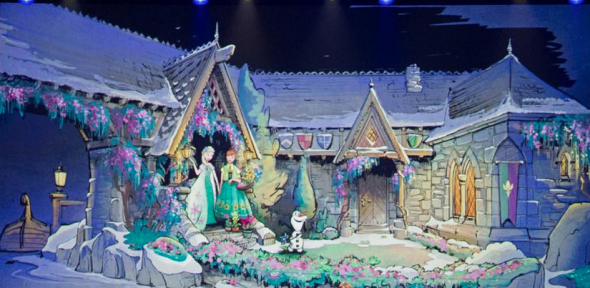
Especially at the peak of its cultural domination in 2014, there were (and continue to be) plenty of oppositional folks who outright detest Frozen (probably just because so many others like it so much; c’est la vie) but the truth is unavoidable: Frozen was literally a new peak for Disney. Commercially, it shattered every record for animated films.
But we know this much, too: no one was more surprised by the film’s phenomenal performance and unstoppable success than Disney. It’s likely that Disney expected Frozen to perform similarly to Tangled and The Princess and the Frog – modest family hits with some princess merchandising potential.
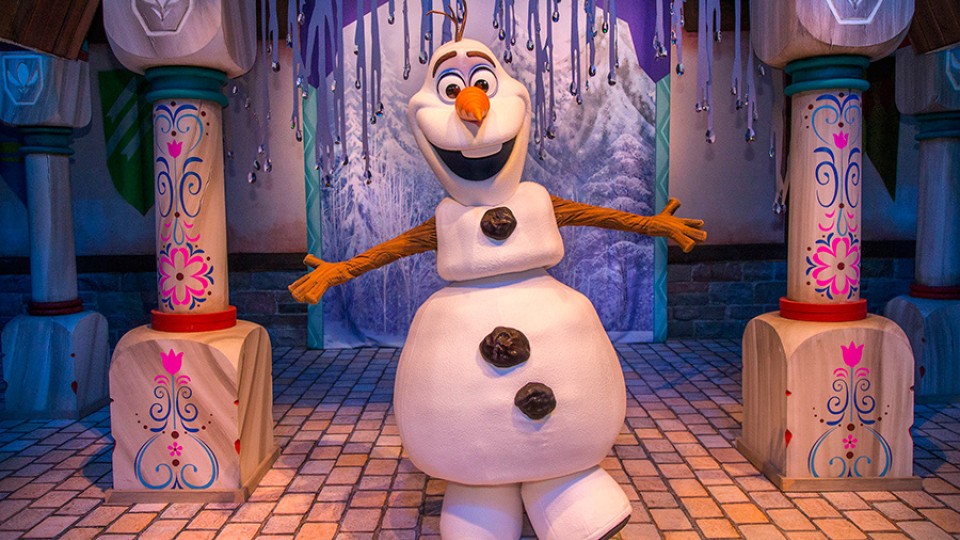
A billion dollars later, fans watched through 2014, 2015, and 2016 as Disney scrambled to react, moving the Anna and Elsa meet-and-greets from venue-to-venue and park-to-park as lines topped five hours for a chance to briefly interact with the sisters. What’s worse, it wasn’t until the next year that the resorts could pool their resources to put on temporary Frozen themed parties, overlays, and events – events that brought staggering crowds to Hollywood Studios, California Adventure, and Disneyland Paris even 18 months after the film’s debut.
To that end, some criticized Frozen not for getting a ride, but for getting one “too late,” missing out on the initial rise of the film. Of course, that’s short-term thinking… Frozen isn’t just destined to be a continuously-revived franchise; it’s a landmark film in its own right that – like The Little Mermaid, Cinderella, or The Lion King – will be a Disney classic forever. So there’s no question, Frozen deserves a ride. But…
3. Does Frozen deserve a better ride?
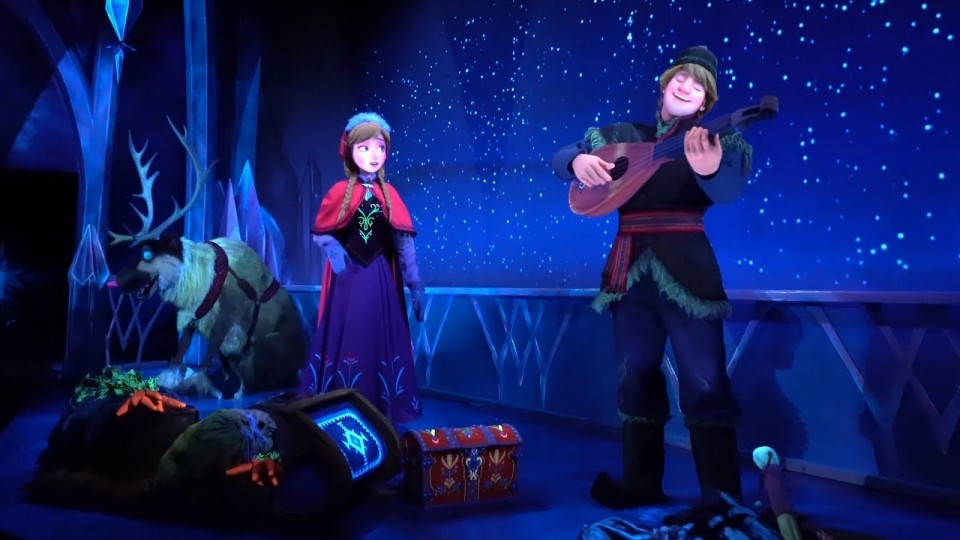
Frozen Ever After is astounding. Princesses, trolls, Scandinavian castles, fjords, fishing villages… (For those keeping track, it technically includes all the elements those Norwegian investors required back in 1986, except for Vikings and an oil rig.) It’s a wonderful family ride that’ll delight for decades.
But if we’re being very honest, we predicted from the start that even an exceedingly well-done overlay of Maelstrom (which Frozen Ever After is) is simply not be the ride that Frozen has earned. As beautifully redressed and wonderfully reimagined as the attraction is, its very foundation – Maelstrom’s four-minute, low capacity ride and existing scene dimensions – simply hemmed in the potential for a ride based on the highest grossing animated film ever.
Any ride – however exceptional! – draped over the remains of Maelstrom would be handicapped from the start. Frozen Ever After somehow manages to be an E-Ticket nonetheless. But to think of what could have been… In a fictional fifth Walt Disney World park, we can easily imagine Arendelle being its own entire land anchored by one or more awe-inspiring E-tickets with cutting edge technology and the brilliant showmanship Disney’s known for (which makes it all that more frustrating that Arendelle lands are being built in Hong Kong and Paris, and both are all-but-confirmed to be building clones of Epcot’s Frozen Ever After, complete with Maelstrom ride layouts!)
Don’t get us wrong: Frozen Ever After is benevolent, fun, and beautiful at worst, and a seriously impressive dark ride at best! But is it what Frozen deserves? Hmm.
Maelstrom subsides

Regardless of your opinions on Maelstrom or on the Frozen Ever After attraction that took its place, the closure of Maelstrom signaled yet another notch on the shrinking belt of the original EPCOT Center. A park once filled with outstanding, classic, historic dark rides lost yet another to the ever-turning wheels of progress.
When we look objectively, it may be true that Maelstrom was an oddity; a ride unlike any other Disney had ever created. Mismatched tones, odd transitions, an uneven story, and a strange ride experience altogether. But that doesn’t make it any less important in the memories of those who were thrilled by its waterfalls, terrified by its trolls, and touched by its heart.
Even if you skipped the final film every single time, you’re likely to remember Maelstrom forever. And that’s precisely what Norway wanted.

Thank you so much for reading. Now, it’s your turn to join the story. If you enjoy spending time falling down the “rabbit hole” of Park Lore’s in-depth, ad-free, member-supported stories, consider becoming a Member for as little as $2 / month.
Members can unlock rare concept art in every tale, reveal attraction audio streams in select stories, gain access to over a hundred exclusive articles in our quick-read Extra Features and in-depth Special Features collections, gain exclusive podcast extras, and receive an annual member card and merch in the mail! (Plus, y’know, supporting research-based, ad-free, clickbait-free, in-depth theme park writing!)
As in all of the entries in our Lost Legends series, we depend now on you. In the comments section below, preserve your memories of Maelstrom and your thoughts on its life. We want Disney fans of all ages to record their stories so that the experience of Maelstrom is never forgotten. We look forward to reading your comments!



This was a great article. I personally believe that Epcot should have nothing to do with Disney’s characters or the cinematic world of Disney. Don’t get me wrong, there is a place for that, and its not Epcot.. It’s every other Disney park. I went to Epcot the year it opened and have gone for many years after. I was there last year, and don’t feel the need to return any time soon, based on these particular changes. If Frozen is such a huge IP why not give it to the Magic Kingdom where it belongs with the other Disney classics. I feel that what they did to the park and the changes that they are being made, are wrong, and there is a better way to promote the park and bring more admissions.